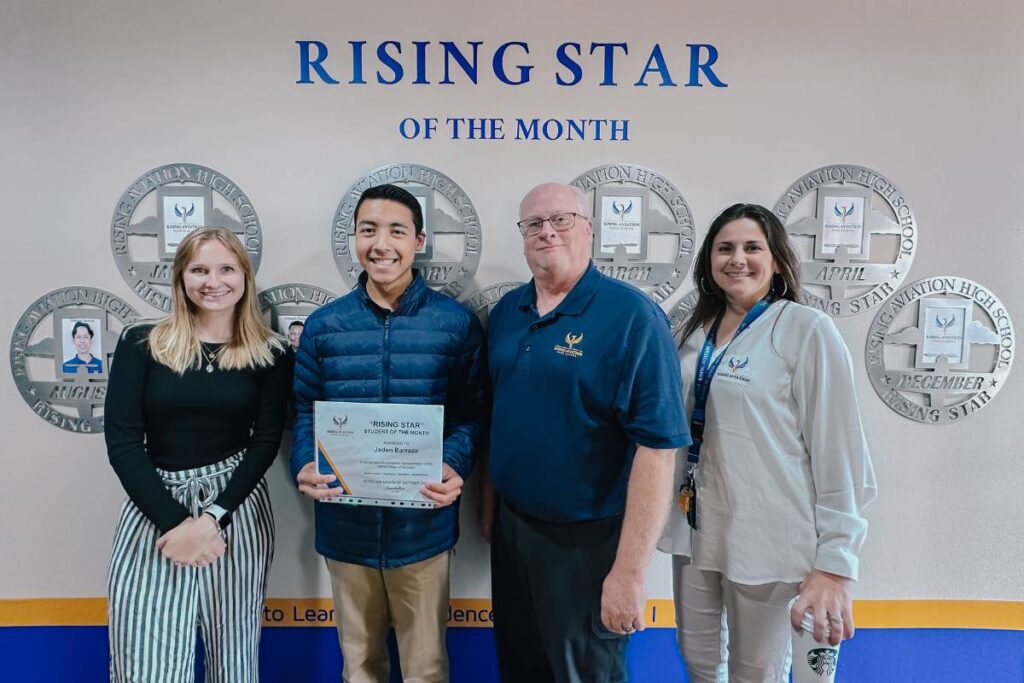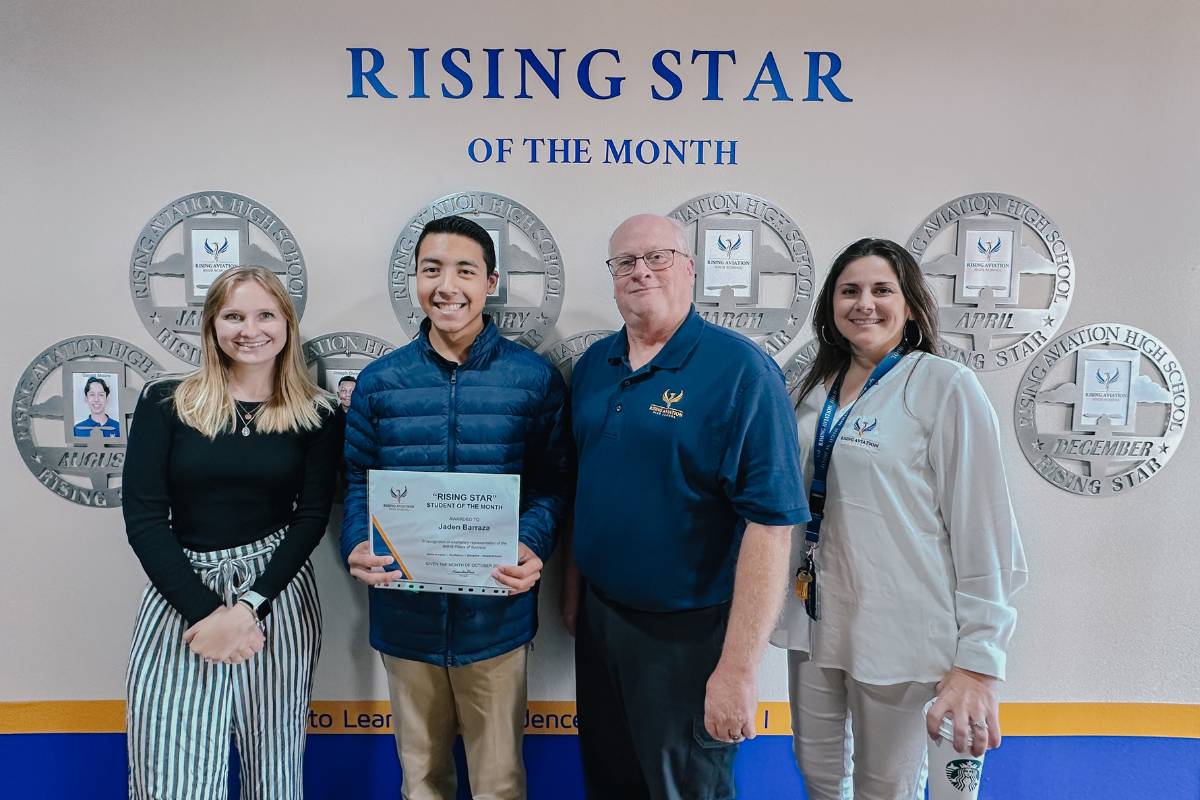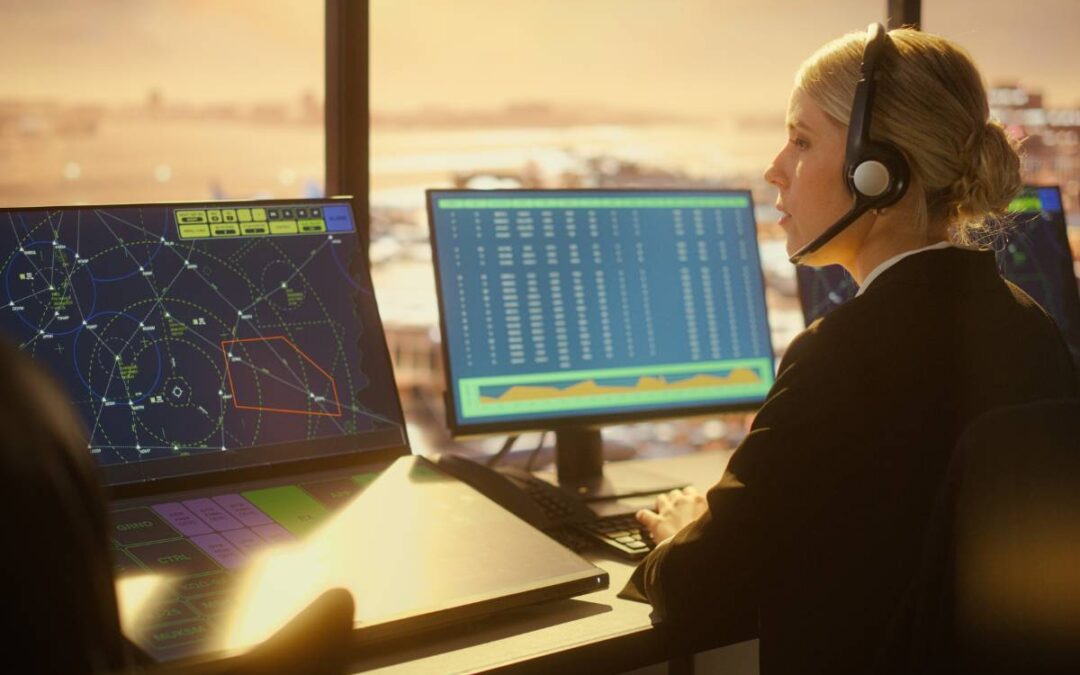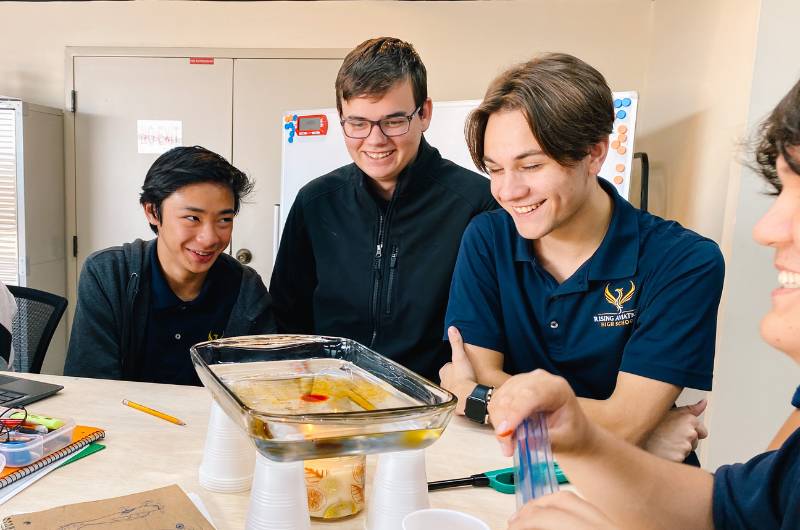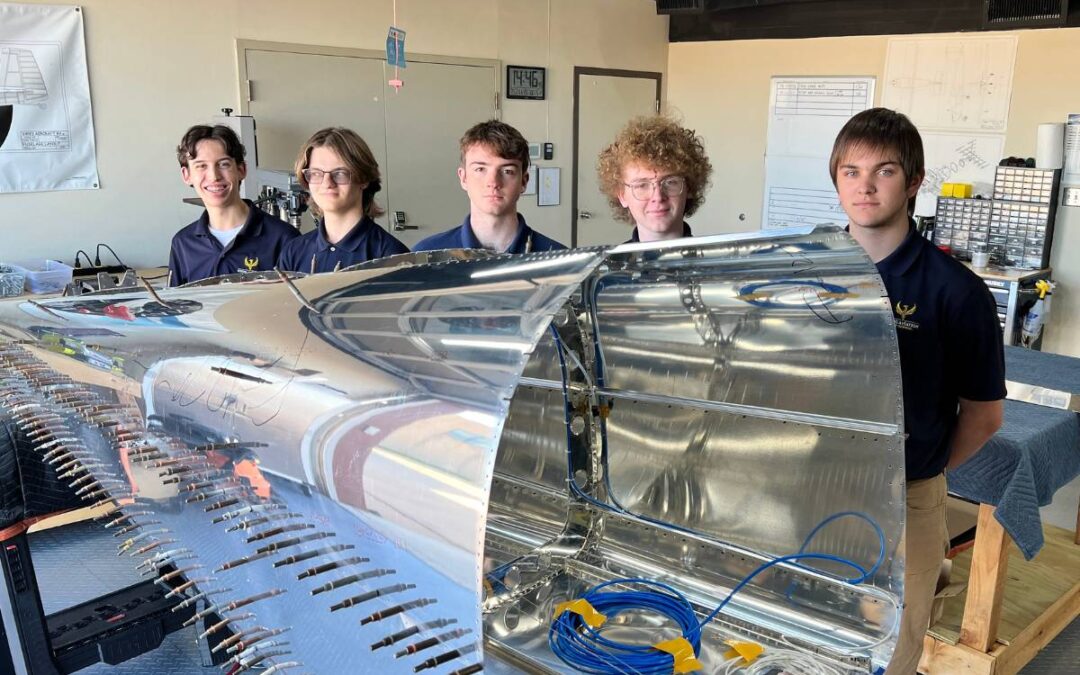Rising Aviation High School is a place where innovation meets opportunity, and our goal is to bring students closer to their dreams of soaring in the skies. In the following interview, our principal, Kassandra Dena, shares the story behind our school, reflecting on her experiences and the values that guide our path.
We invite you to explore her perspective on fostering a vibrant, respectful community that champions growth for every student. Learn how we blend STEM education with practical aviation training to set our learners on a course for success.
1. Can you share a bit about your background and what led you to your role as principal at Rising Aviation High School?
As a product of early college and part of the Bel Air Health Professions High School program, I was able to attain practical skills and certifications through my junior and senior years in high school. With this experience in mind, I knew I always wanted to be a part of initiating career readiness programs in my administrative roles.
In 2018, I had the honor of being part of the inaugural team at the School for the Talented and Gifted in Pleasant Grove, where my passion for opening schools was discovered. Three years later, I had the opportunity to start on my second start-up at Rising Aviation High School.
As an Assistant Principal, I aided Mr. Brent Fitzgerald with a clear vision for what kind of learning environment we wanted to create and the educational outcomes we desired for our students.
Since then, our program has continued to grow as we continue to add career readiness and college readiness opportunities for our students.

2. How do you and the staff foster a positive and supportive school culture among both students and colleagues?
The staff at our school is dedicated to cultivating a positive and supportive culture through the foundational principles of respect, accountability, communication, and problem-solving abilities for our students, as these are key qualities that will drive students towards achieving their goal of becoming aviators or pursuing a career in the aviation industry.
Every member of our team prioritizes mutual respect, recognizing the inherent value of each individual within our school community.
By fostering an environment where everyone feels valued and heard, we lay the groundwork for collaboration and growth.
Through consistent demonstration of respect for one another’s perspectives, backgrounds, and contributions, we create a space where students, educators, and administrators alike feel empowered to thrive and succeed.
In addition, this cultivates a sense of ownership, allowing for students to be more involved and dedicated in their learning.
3. Can you share a memorable moment or achievement from your time at the school that you’re particularly proud of?
Amidst a symphony of applause and a feeling of success, the inaugural graduation ceremony of our campus back in 2023 has been an unforgettable milestone for me.
Our first graduation was of immense significance, as it symbolized the initial chapter of our institution’s journey where we celebrated academic achievements and commemorated the pioneering spirit that set the foundation for the school’s future.
4. How does the curriculum at Rising Aviation High School differ from traditional high schools?
We offer a unique educational experience that combines a STEM-based curriculum with a strong focus on aviation and aerospace technologies, promoting critical thinking, problem-solving, and innovation.
We are working on a new optional hybrid model for the 2025-2026 school year regarding how and when our students are on campus, so please feel free to contact our office and we will be happy to assist you.
Hybrid Model Overview: The proposed hybrid model would enable students to complete their core classes from home.
With Edgenuity, students will have access to built-in tutoring, and Mrs. Maldonado, our lab facilitator, will be available to assist via Remind app or email while students work on their core classes at home.
Using tools like Google Classroom, Securly, and Edgenuity, we will be able to monitor student progress both on and off campus.
For students who prefer to attend school daily, the Learning Lab will offer two sessions for additional academic support: a morning session (9:00a.m. – 12:00p.m.) and an afternoon session (12:30p.m. – 3:30p.m.). Students are welcome to stay all day if they choose.
Academic Standards: To remain in good standing, students will need to maintain an academic average of 85% or higher in all classes, including electives.
If a student’s grade drops below 80% in any course, they will be required to attend school daily until they raise their grade to 85% or higher.
RAHS School Days: As students transition into their Junior and Senior years at RAHS, they will select a pathway (aviation, maintenance, or drones).
They will be required to attend campus for one designated day per week, as well as on Fridays, which will be a required day for all students.
Fridays will be reserved for STEM and aviation-related activities, such as excursions, extracurricular events, and guest speakers, with no Edgenuity work on this day.
A sample schedule for the aviation, learning lab, and maintenance pathways is attached below. The drone pathway is currently under development.
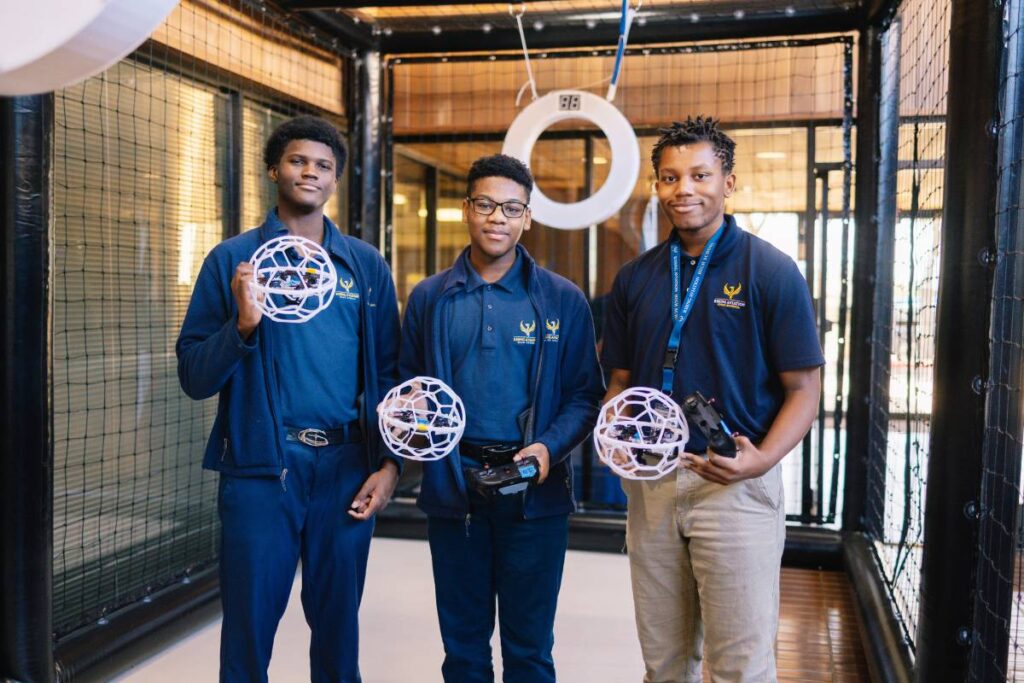
5. How does the school encourage critical thinking in STEM subjects among its students?
Learning is most effective when students are actively involved in the process. This means students take responsibility for their learning by asking questions, seeking answers, and participating in activities that promote deeper understanding.
Our learning lab facilitator, Sandy Maldonado, does an amazing job in encouraging students to ask open-ended questions and explore concepts through investigation and research. One way she does this is by creating STEM extension activities that provide students opportunities to make interdisciplinary connections and apply that knowledge in new ways.
For example, students in Algebra II had a unit on graphing radical equations and had to graph where to place roller coaster struts and cables. Mrs. Maldonado took that one step further and had students connect their knowledge of potential and kinetic energy from chemistry along with their Algebra II unit to design a roller coaster in an engineering game.
In their aviation courses, Ms. Hernandez heavily focuses on the science of flight, especially principles like Bernoulli’s Principle, Newton’s Laws of Motion, and Lift and Drag.
Students explore how the forces of flight work and why airplanes can stay in the air, which directly ties into physics concepts. She also delves into weather and environmental science, technology, aircraft simulation, and aircraft design and engineering.
Maintenance instruction provided by our A&P Mr. Miller, enables students to learn STEM concepts through hands-on experiences with aircraft maintenance and engineering. Students learn practical skills related to the aerospace field while applying STEM knowledge in a tangible way as they build an RV-12 on campus. He strongly focuses on key areas such as electronics, mechanical systems, and systems engineering.
6. How does the school support students who are struggling academically or personally?
RAHS provides more of an individualized approach for students to receive guidance and support who are struggling academically or personally.
Our staff communicates daily and holds weekly student recap meetings that allow for us to collaborate about student successes and areas for improvement.
We can closely monitor a student’s progress over time, adjusting the support provided to ensure the student is progressing both academically and personally.
We contribute to regular personal interactions with students, which allows them to stay accountable, ensuring that they too take proactive steps in both their academic work and personal development.
7. How does the school foster a sense of community and belonging among students?
RAHS fosters a sense of community among students by creating an inclusive and supportive environment where every student feels valued. Leadership opportunities play a crucial role in this process, as they empower students to take on roles that allow them to contribute to their school and community.
Some examples of this are shown through student leadership programs, extracurricular activities, community school culture, peer mentoring and support, leadership in school wide networking events.
Through these ways, students are able to develop the skills necessary to lead while building a sense of unity and connection within the school community.
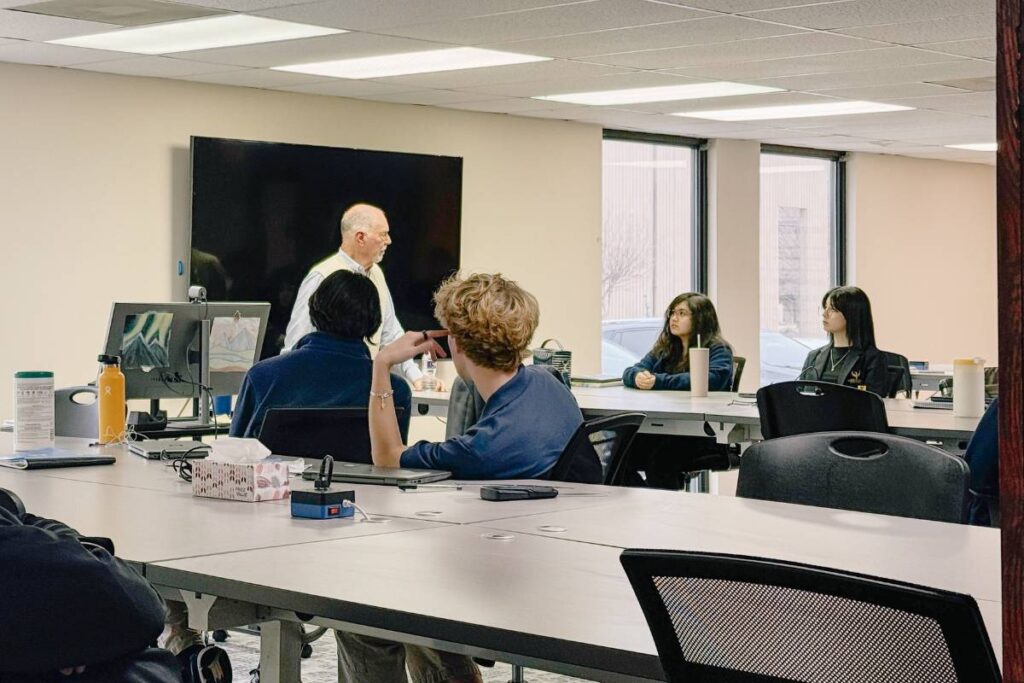
8. Looking forward, what are some of the goals and aspirations for the school?
RAHS could benefit greatly from expanding its outreach and partnership with various aviation related organizations.
These partnerships can help students gain practical experience, certifications, and pathways to careers in aviation and other technical fields.
Some strategies for growing those connections can be done through Dual Enrollment Programs, Internships and Apprenticeships, mentorship programs, Industry Partnerships & Sponsorships from the aviation community.
9. How does the school incorporate real-world aviation challenges into the curriculum?
Several common ways Rising Aviation High School incorporates aviation industry challenges into their teaching includes simulations and flight training, industry partnerships, case studies and innovation projects through their core academics, exposure to industry tools and technology, excursions and aviation expos.
10. How does the school celebrate achievements and milestones of both students and staff?
“Rising Star” is a prestigious recognition awarded to one student each month who consistently exemplifies the RAHS Pillars of Success—Desire to Learn, Confidence, Discipline, and Respectfulness.
This student not only demonstrates excellence in their personal conduct but also serves as a role model for the entire RAHS community.
